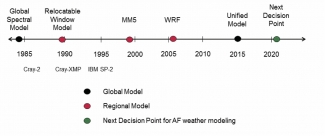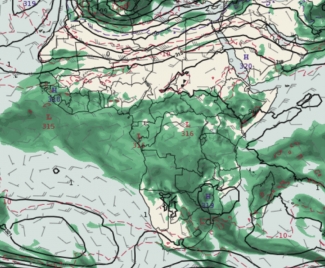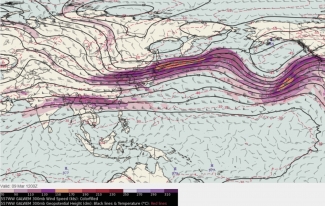The longstanding mission of the U.S. Air Force Weather (AFW) enterprise is to maximize America’s power through the exploitation of timely, accurate, and relevant weather information, anytime, everywhere. To meet this mission, the Air Force has operated a broad range of numerical weather models to analyze and predict environmental parameters that impact military operations. The internally developed Global Spectral Model (GSM, a separate effort from the NCEP GSM) was the first operational model run by the Air Force implemented in the early 1980s. The GSM was replaced by the Relocatable Window Model (RWM) in 1990 and then in the late ‘90s Mesoscale Model 5 (MM5) went into operations. In 2006, the Weather Research and Forecasting (WRF) model became the mainstay for Air Force operations and has remained so for most of the last decade. On 1 Oct 2015, the new Global Air-Land Weather Exploitation Model (GALWEM), based on the United Kingdom Met Office’s (UKMO) Unified Model, was implemented as the Air Force’s primary weather model to meet the warfighter’s global requirements. (Figure below provides timeline of USAF weather model evolution).
The Air Force is a Charter member of the DTC, as well as a number of other interagency partnerships working toward a shared goal of rapidly and cost effectively advancing U.S. weather modeling capabilities. These include the National Unified Operational Prediction Capability (NUOPC), the National Earth System Prediction Capability (ESPC), and the Joint Center for Satellite Data Assimilation (JCSDA). The science insertion, validation studies, and user product improvements developed through these partnerships have benefited AFW significantly.
The Air Force’s contributions to the DTC have focused on verification and tuning of the WRF model for a range of domains around the world; support to the standardization, documentation, and baseline management of the Gridpoint Statistical Interpolation (GSI) data assimilation system used by all of the DTC partners; and enhancing the community Model Evaluation Tools (MET) to more effectively verify clouds and other aviation parameters and to improve ensemble verification techniques.
During the next decade, the Air Force will be working with our national and international modeling partners toward a goal of consolidated capabilities to assimilate, analyze and predict parameters critical to military operations in a single model solution, independent from the model(s) used downstream of the DA system. The converged solution is expected to improve overall efficiency and reduce costs while streamlining new science insertion. We look forward to working closely with the DTC to achieve this goal.


